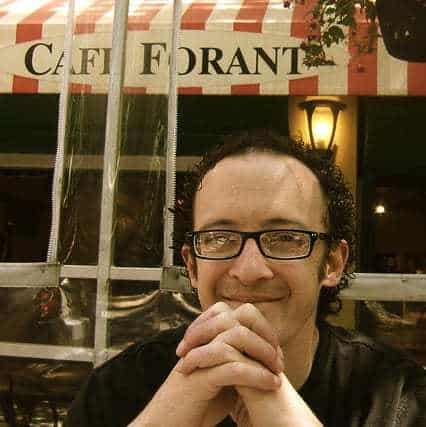 Today’s guest post is the second of two by J. R. Daniel Kirk, assistant professor of New Testament at Fuller Theological Seminary who blogs over at Storied Theology. Daniel is the author of Unlocking Romans
Today’s guest post is the second of two by J. R. Daniel Kirk, assistant professor of New Testament at Fuller Theological Seminary who blogs over at Storied Theology. Daniel is the author of Unlocking Romans
and Jesus Have I Loved, but Paul?
Here he continues his thoughts on why the Bible should be read as story, not a theological textbook–even if narrative readings are risky.
In my previous post, I started reflecting on the Bible as “story,” and what difference that might make for how we read it.
One reason why the story image so powerful–and also, then, why it can be frightening–is that stories are much more difficult to pin down than theology texts. They are also more difficult to enact than owners manuals.
Encountering a story, five different people are likely to give five different interpretations.
Encountering a story, we discover characters and plots that develop and change.
Encountering a story, we enter into a world that we cannot control–even though we can shape how the story is read and understood by our own telling.
What this means, in part, is that if we open ourselves up to the idea of “story,” we are opening ourselves up to a Christianity, and a God, that cannot be easily controlled or pinned down. We are opening ourselves up to embracing the plurality of Christian expression and practice that we find even in the pages of scripture itself.
I was recently challenged on this. A perceptive reader of my work asked, “You’re talking about plurality and openness, and yet you speak quite confidently about any number of issues–where does that confidence come from within this more open narrative?”
Of course, part of the answer is just that I’m an 8 in the Enneagram. I am always confident about everything I say!
But besides that, there is a theological story that undergirds those things about which I am confident, and for which I argue: the story of the life, death, and resurrection of Jesus Christ is the story within the story that lends unity to the whole.
The cross itself can be interpreted in any number of ways. But the cross itself also consistently places itself before us as the measure for our own faithfulness (or lack thereof). It is not only something we interpret, it also interprets us.
When Paul is challenged by other apostles, he invites the Corinthians to measure them each against the gospel of the crucified and his own embodiment of it: “I die daily.” “Always carrying about in our body the dying of Jesus so that the life of Jesus may be manifested in your mortal body.”
In Mark 8, when the climax of Jesus’ story stands on the edge of a knife, between Jesus’ self-proclaimed cross-destiny and Peter’s desire for a different kind of Messiah, Jesus not only says, “The Son of Man must suffer and die,” but also “If anyone wants to come after me, let that person deny himself, take up his cross, and follow me.”
The gospel story is, at its heart, the story of Christ crucified. It is the story of the God who looks upon His people, and His son, as they have nothing, make themselves nothing–and blesses that nothingness with abundance.
There is a narrative dynamic of life out of death, a narrative dynamic of power out of weakness, a narrative dynamic of Kingdom abundance overcoming worldly scarcity that delineates the Christian story.
So we take up this narrative, and we interpret and it and judge our readings against the narrative by which we are saved.
When 2 Timothy says all scripture is God-breathed, that breath of God is placed in a larger context: “You have known the scriptures that are able to give you the wisdom that leads to salvation through faith in Christ Jesus.”
See? It’s not just “scripture,” as such, that is good and according to the will of God.
It is “scripture with Christ as its end and goal” that is the story of God.
I don’t worry about narrative readings of scripture leading us astray. I don’t worry, because the standard by which such tellings are judged is this: does your reading highlight our world-denying, economy-inverting call to give up all that we are in faith that God will bring abundance? Does it call us to make good on the summons we’ve said we’ll heed–to follow Christ along the road of death, trusting God to give the glory rather than seizing such glory for ourselves?
The story of the cross is the story within the story. Interpret that cross how we will, the church, and God’s people individually, are known when our own story becomes that cruciform narrative that makes us His own.
